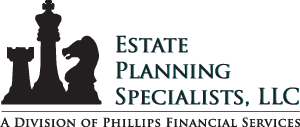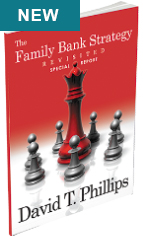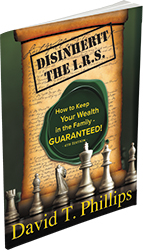
Bob Carlson's - September 2016

Two Ways to Avoid IRA RMDs with No Out-of-Pocket Cost
We’ve been in the vanguard of showing owners of traditional IRAs how to maximize the after-tax value of the IRAs left to heirs. We do that by minimizing or avoiding required minimum distributions (RMDs) and searching for ways to turn IRAs into tax-free, guaranteed money. In the past, I’ve shown you several strategies that achieve these goals. (See our May and November 2015 issues for examples of these strategies.) Here are two new strategies to consider.
First, I’ll advise these strategies aren’t for everyone. They primarily are for people with substantial IRAs who have enough income and assets outside the IRAs to pay their retirement living expenses. Often they view their IRAs as emergency funds and something to be left for their loved ones.
The first strategy is known as The IRA Reboot. The Reboot is an alternative to converting to a Roth IRA. The important difference is you have no out-of-pocket cost with the IRA Reboot. When a traditional IRA is converted to a Roth IRA, you include the converted amount in gross income and pay taxes as though that amount were distributed to you. With the Reboot, you use several tax code provisions and a special type of life insurance policy to avoid paying the taxes out-of-pocket.
The IRA Reboot is best explained through an example. Max Profits is 65 and is in average health. He is in the 28% tax bracket. He has a $500,000 Traditional IRA that he’s considering converting to a Roth IRA in stages over the next three years. Converting the entire IRA at once would put the entire $500,000 in his gross income in one year. So, converting in stages reduces the overall tax cost by keeping him in the same bracket.
Instead, Max opts to do the IRA Reboot over three years. In the first year, he takes $166,000 from the IRA and uses it to pay a premium on a specially designed Indexed Universal Life Insurance policy. Immediately, he has a policy with a benefit of $2,043,266 payable after Max’s passing to beneficiaries designated by him. The policy also has a cash value account. Taxes on the distribution from the IRA are due by April 15 of the next year, so at the end of the first year, he borrows $46,480 from the insurance company, using his cash value account as collateral for the loan, and uses it to pay the taxes on his IRA distribution.
Max repeats these steps the following two years. After three years he’s converted his $500,000 IRA into a paid-up life insurance policy. He’s done this with no out-of-pocket cost. Now, Max has several options. His main goal was to leave the IRA value to his heirs. Instead of an IRA, he can leave them a tax-free life insurance benefit, though the loans he took to pay the income taxes will be deducted from the insurance benefit.
But if Max needs cash flow during his lifetime, he can turn to the insurance policy. When he doesn’t need regular income, he can take loans, using the cash value account as collateral, whenever cash is needed. If Max decides he needs a stream of income, he can let the cash value compound its income and gains for a while. In the sixth year, he can begin to take tax-free $27,805 annually for life. Or he could wait until year 11 and increase his annual cash flow to $41,574. These payments would be loans collateralized by the cash value account and would re-duce the benefit paid to his beneficiaries. Max’s beneficiaries still would inherit the residual benefit tax free.
You can see that Max converted his traditional IRA into a much higher tax-free amount, and that amount is guaranteed to be paid to his heirs (minus any loans Max takes during his lifetime). The amount isn’t subject to the vagaries of the investment markets the way his IRA balance would be. Max did this without using his resources to pay the taxes, and he has access to the cash value account if he needs it. Let’s look at another way the same tax code provisions and insurance policy can be used to increase the after-tax value of the IRA for your heirs.
This concept is known as the IRA Re-capture Strategy and has several steps.
First, you need a business or to be able to set one up. The business will need at least $5,000 to $10,000 of cash flow for five years. If this strategy otherwise is a good one for you, there probably is a way to create a business with enough income to qualify. For example, one man who was caring for his father set up a corporation through which he cared for the father. You can have any form of business: sole proprietorship, corporation, etc.
Second, the business sets up a qualified retirement plan. The plan can be either a profit-sharing plan or a solo 401(k) plan, though profit-sharing plans probably work best.
Third, roll over all or part of your traditional IRA to the qualified retirement plan. You’ll work with an insurance agent to determine how much to roll over.
Fourth, the retirement plan buys a permanent life insurance policy. You need to set up the business and the qualified retirement plan, because IRAs aren’t allowed to purchase life insurance. As with the IRA Reboot, the insurance must be a certain type of indexed universal life insurance (IUL). It will have a cash value account, and you can choose how that account will be invested from among options offered by the insurer. Initially, you want the account invested only in cash to keep the growth of the account low, minimizing taxes in the next step. You don’t have to take RMDs from the retirement plan while the business is operating and the plan owns the life insurance. There will be some expenses related to creating and maintaining the retirement plan for at least five years. That’s why the business needs income. Also, the term insurance cost of the life insurance will be included in your gross income each year the policy is held in the retirement plan.
Fifth, after five years the retirement plan distributes the policy to you. Then, you can terminate the business. You also can change the investments in the cash value account to seek higher returns. The value of the policy is included in your gross income when it is distributed. This is where the strategy is a bit complicated. The IRS issued rules on how insurers are to determine the value of the policy. The key rules are in Revenue Procedure 2005-25.
You don’t need to know the details of how the value is computed. The important point is that the insurance policy can be valued at less than the original IRA value. The value will depend on your age, the rate of return on the cash value account, and other terms of the policy. Typically, the value of the policy is 35% to 40% less than the original value of the IRA.
Once the policy is distributed to you, it is treated as a policy you purchased. You have a number of options. The policy can be put in an irrevocable trust. The trust would ensure the policy isn’t included in your estate for tax purposes. After you pass, the policy benefits are paid to the trust. The trustee distributes them according to the terms you put in the trust agreement. The benefits could be distributed right away to your loved ones, or they could be invested and distributed over time.
Instead of putting the policy in a trust, you can retain ownership. When your estate, including the insurance benefits, isn’t likely to exceed the estate tax exemption limit, there’s no tax disadvantage to retaining ownership of the policy. When you retain the policy, you can access the cash value tax-free using loans or withdrawals as in the IRA Reboot strategy.
You also can add riders to the policy that might meet your other financial goals. For example, the policy offers chronic illness and critical illness riders that might fit into your long-term care plan. These riders allow you access to all or part of the death benefit when you are diagnosed with a terminal, chronic, or critical illness. You also can opt for a lifetime income benefit rider that guarantees a stream of income for life.
The IRA Recapture strategy offers two key advantages over retaining an IRA. One advantage is the life insurance benefits are likely to be more than the initial value of the IRA and what it would have accumulated to after years of investing. Tax benefits are the other advantage. Because of the way the life insurance policy is valued, you pay less in taxes to take it out of the retirement plan than you would to take an IRA distribution or convert to a Roth IRA. Of course, the life insurance benefits are tax-free to the beneficiaries.
Here’s an example of how the strategy can work. Suppose Max Profits is 65 and has a $500,000 traditional IRA. He projects that he’ll earn 5% on his investments and will be in the 40% tax bracket. If Max executes this strategy, the life insurance policy immediately has a death benefit of $1,085,000 for his beneficiaries. He’ll pay $149,673 in taxes when the policy is distributed from the retirement plan, giving his heirs a net benefit of $872,156. If he doesn’t take any money out of the policy during his lifetime, that amount is the net inheritance for his heirs.
Let’s say Max decides he’ll need $44,895 of income after taxes each year beginning at age 75. Under the insurance strategy, he can take that amount from the cash value each year through loans. The net insurance benefit to his heirs at age 80 would be $873,316.
If Max were to stay with the traditional IRA and he passes away at age 80, after his RMDs, the after-tax value of the IRA to his beneficiaries is about $584,482. Or if Max instead converts the traditional IRA to a Roth IRA, the after-tax benefit to his heirs at age 80 is $557,977.
Of course, the results depend on your individual circumstances. Keeping the traditional IRA or converting to a Roth IRA might be better for those who earn higher investment returns or are in lower tax brackets. But keep in mind that the results from using life insurance are guaranteed. They don’t depend on the investment markets or changes in your tax bracket.
As I said, this strategy isn’t for everyone. It is for someone whose IRA is intended more for his heirs than for retirement, who has some business income or can arrange his affairs to create some, and who is insurable. I have used 65-year-olds in the examples, but the benefits usually are better for someone who is younger. These are not do-it-yourself strategies. If you’re interested in more details and determining if either option might be for you, I recommend contacting David Phillips of Estate Planning Specialists at 888-892-1102.




